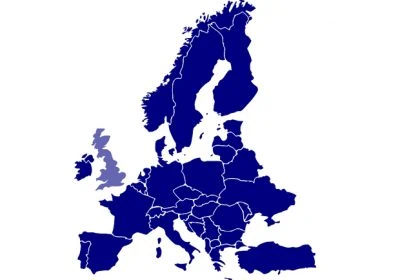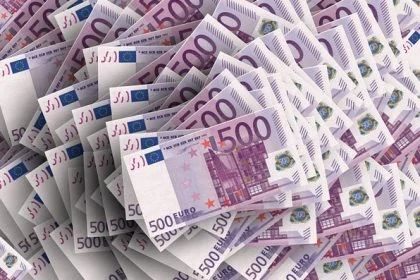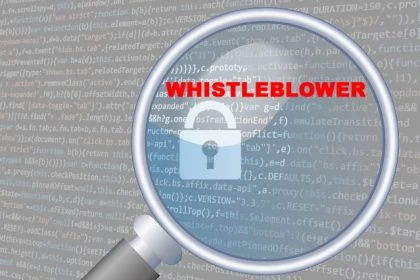In its recent ‘Royalty Pharma’ judgment, the ECJ lists evaluation criteria for the term ‘product’ protected by a basic patent – even if it is not expressly mentioned in the claims of the basic patent. This is therefore also an important decision with regard to SPC.
 According to Art. 69 EPC, the scope of protection for a European patent is determined by the claims of such a patent. The question referred, which was decided by the highest European Court of Justice (ECJ) in the recent judgment ‘Royalty Pharma’ EU:C:2020:327, concerns the interpretation according to Art. 3(a) of Regulation No 469/2009.
According to Art. 69 EPC, the scope of protection for a European patent is determined by the claims of such a patent. The question referred, which was decided by the highest European Court of Justice (ECJ) in the recent judgment ‘Royalty Pharma’ EU:C:2020:327, concerns the interpretation according to Art. 3(a) of Regulation No 469/2009.
Preliminary ruling referred by the German Patent Court:
Is a ‘product’ protected by a basic patent in force within the meaning of that provision if it corresponds to a general functional definition used in one of the claims of the basic patent and necessarily forms part of the invention protected by that patent but cannot be individually identified as a concrete embodiment of the teaching of the patent?
The main proceedings
At the centre of this procedure is the European Patent (DE) EP 1 084 705, filed in 1997 by Royalty Pharma. This is the basic patent at issue in the main proceedings for a method of reducing blood sugar levels by administering DP-IV inhibitors such as sitagliptin. That product was developed by a licensee of Royalty Pharma’s basic patent only after the application for the basic patent had been filed. The licensee was granted a new patent for sitagliptin, which served as the basic patent for the grant of an SPC.
The legal dispute arose when, in 2014, Royalty Pharma applied for an SPC for sitagliptin in Germany on the basis of its basic patent from 1997 for the drug marketed under the name Januvia. The DPMA refused to grant the requested SPC and took the view that, although sitagliptin corresponds to the functional definition of the DP-IV inhibitor given in the claims of the basic patent at issue in the main proceedings, the patent lacked any specific disclosure of that product, so that the specific active substance for the person skilled in the art was not apparent from it. The subject-matter of the patent therefore does not correspond to the medicinal product subsequently developed and marketed under the name Januvia.
Royalty Pharma filed an appeal with the German Patent Court (german: Bundespatentgericht (BPatG)). Royalty Pharma argued that in order to claim the protection conferred by a basic patent in force, it is not necessary for that patent to indicate the chemical name or the structure of the protected active substance. Rather, a description of the functional characteristics of the active substance is sufficient for this purpose. And sitagliptin corresponds to the functional definition of the corresponding class of active substances and therefore belongs to the “core of the invention covered by the patent”.
The BPatG stressed the fundamental differences between the EU Member States in the interpretation of the criteria developed in the case-law of the Court of Justice on Article 3(a) of Regulation No 469/2009. It referred, inter alia, to the interpretation on that point given by the High Court of Justice of England and Wales, Chancery Division (patents court) (High Court of Justice of England and Wales, Chancery Division (Patent Court), United Kingdom), according to which the concept of ‘the core of the inventive step’ applies to Article 3(a) of Regulation No 469/2009.
The BPatG therefore put the question to the ECJ and referred to the case law of the ECJ that the object of protection of the basic patent had to be considered, which had to be determined in interpretation of the claims of this patent.
‘Product’ must meet the functional definition
The ECJ confirmed this case law mentioned by the BPatG and follows the previous case law on the term ‘active substance’ with its current judgment on the assessment criteria for the term ‘product’. An active substance which corresponds to a functional definition contained in the claims of a granted European basic patent can be considered to be protected by this patent – if the claims relate to this active substance, the ECJ had ruled in the highly regarded Teva UK (EU:C:2018:585) judgment.
Therefore, in relation to the term ‘product’, two cumulative conditions must be met for a product to be protected by a basic patent:
- Firstly, in the light of the description and drawings of the basic patent, the ‘product’ must necessarily be covered by the invention protected by the patent for the person skilled in the art.
- On the other hand, the person skilled in the art must be able to identify the ‘product’ in a specific way in the light of all the information disclosed by the patent according to the state of the art at the date of filing or at the priority date of the patent.
Although sitagliptin in the main proceedings is not expressly mentioned in the claims of the basic patent, it corresponds to the functional definition used in one of the claims. Therefore, it fulfils the first condition, the ECJ ruled.
However, the fulfilment of the second condition was not so clear, the court added.
Can sitagliptin be identified by the person skilled in the art, although it is not individualised as a concrete embodiment in the patent specification of the basic patent? In order to do so, the national court must in particular examine whether the subject-matter of the SPC concerned is within the limits of what a person skilled in the art can deduce, the ECJ ruled. The person skilled in the art must be able to infer directly and unequivocally from the patent specification – as filed – that the ‘product’ which is the subject matter of the SPC falls within the scope of protection of that patent.
The court added that this also implies that the grant of an SPC is in principle not excluded even if the product which is the subject-matter of the SPC cannot be individually derived as a concrete embodiment from the teaching of the basic patent.
‘Product’ developed after the filing date or on the priority date? No protection
A product which has been developed after the date of filing of the application or on the priority date of the basic patent cannot therefore be regarded as protected by the basic patent, the ECJ stated. For the second condition could not be fulfilled, as there was no identifiable product at the date of filing or priority date. The same applies to a product that was developed after the application or priority date of the basic patent according to an independent inventive step.
Patent protection in the field of pharmaceuticals and SPC grant – also an issue for you?
Our patent attorneys and attorneys at law have expertise in all fields of intellectual property law, both nationally and internationally.
We would also be pleased to represent you before the offices and in court. We are authorized to represent you before any court in Germany and also internationally.
We are looking forward to the contact with you!
Sources:
Judgement of ECJ about term ‚product‘, EU:C:2020:327
Image:








Leave a Reply